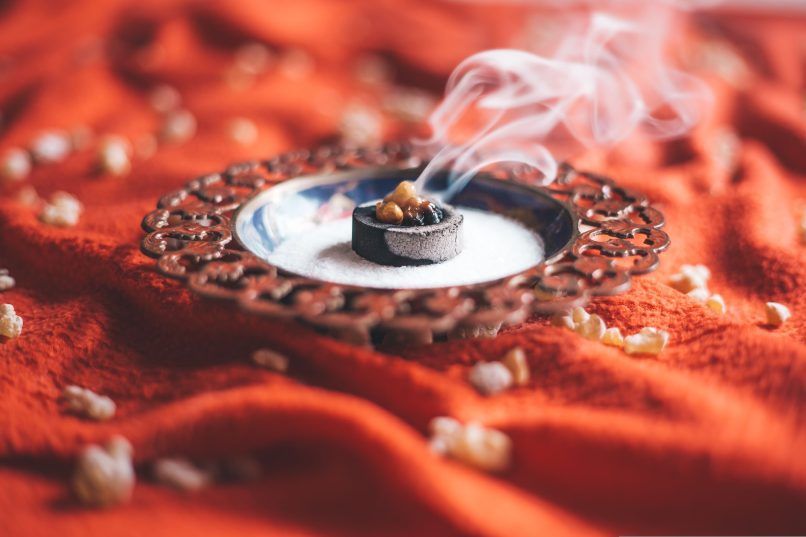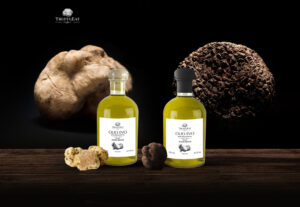With an origin story that dates back to the 16th century – frankincense has played many roles over the years, including that of a fragrance, an anti-aging skincare hack, and a remedy for arthritis. If you’ve yet to incorporate the unique ingredient into your everyday routine, these benefits and uses along with expert tips from Shangri-La Muscat’s certified sommelier Khalid Al Amri might just prompt you to.
A hardened gum-like product from the trunk of the Boswellia tree was used by ancient Egyptians for a range of religious rites. It also found its way into Christian lore as one of the three gifts presented to infant Jesus by the Magi. Meanwhile in China, it was used as both an internal and external remedy. Frankincense’s history is quite rich, with its connection to the Middle East being particularly significant. There, it is commonly known by its Arabic name Luban.
“In ancient times the frankincense trail (from Dhofar in southern Oman) was one of the most important commercial routes throughout southern Arabia. It was transported by camel along the spice trails from east to west and on to other empires across the globe,” Khalid Al Amri, Shangri-La Muscat’s Frankincense Sommelier, and the first accredited frankincense sommelier in Oman tells Lifestyle Asia India. Today, the versatile ingredient is found in incense, perfumes, aromatherapy, herbal supplements, beauty products, spa treatments, and even cocktails. We take a look at everything there is to it.
What is frankincense?

Derived from Boswellia trees that are native to the mountains of Africa, India, and the Middle East – frankincense is also known as olibanum. In particular Oman, Yemen, Ethiopia, and Somalia are known for the best quality, aromatic resin. “There is a special technique used to harvest the frankincense with a knife called a Manqaf. The Manqaf is used to make a cut in the tree’s trunk and the sap slowly drips out in tear-shaped droplets. The aromatic resin then hardens and is cut from the tree bark,” Khalid Al Amri adds. This resin has a distinctive earthy, spicy aroma and is often steam-distilled into an essential oil. However, as stated earlier, it can be transformed into a supplement or incense.

“Growing up, if I was not feeling well my mother would boil Al Hojari frankincense in warm water, which is a high grade of frankincense that can be ingested for medicinal purposes.” Khalid Al Amri notes. Several traditional medical practices – including Ayurveda and Chinese medicine also incorporate frankincense into their remedies. A few science-backed benefits include:
- May ease inflammation caused by arthritis: A few studies have found that frankincense can prevent the release of leukotrienes – compounds that cause arthritis-related inflammation. Boswellic acid is to thank for this phenomenon. Other studies have found reduction in symptoms with topical as well as oral usage.
- May improve asthma: The prevention of the release of leukotrienes is also linked to reduced contraction of bronchial muscles, which occurs in people with asthma. That aside, the ingredient might block the production of Th2 cytokines, which trigger mucus overproduction. These benefits come with supplementation.
- May maintain oral health: Boswellic acid in frankincense might have antibacterial properties that can stave off gum disease and treat oral infections.
- May stave off cancer: A few studies have found that boswellic acid could prevent cancer cells from spreading and might even stave off their production.
- May maintain gut health: Supplementing with frankincense has been found to reduce inflammation, which in turn reduces the symptoms of IBS – such as abdominal pain and bloating.
Other benefits of frankincense include lowering blood sugar levels, reducing anxiety and depression, staving off heart disease, reversing the signs of skin ageing, improving memory, and balancing reproductive hormones. Some cultures use it to boost fertility. That said, the research around these is quite preliminary and further studies are needed to support these claims.
Ways to use frankincense
You could shop for skincare products with frankincense to make the most of its supposed anti-ageing benefits. Alternatively, the essential oil can be combined with a carrier oil and used topically – albeit after a patch test. You could also run a hot bath and drop a frankincense-infused bath bomb or bath salts into the mix to rejuvenate your mind and body after a long day. One of the more popular ways to use the essential oil is for aromatherapy. “ Luban is used as a room scent to dissipate kitchen smells and ward off any negative energy,” Khalid Al Amri shares. “The aromatic resin is also used for ceremonial and celebratory occasions such as during prayer and at weddings,” he adds.
He further notes, “It is commonly burnt at sunrise and sunset and is a key part of the welcome experience in an Omani household. When we welcome a guest into our home in Oman, we burn frankincense to create a wonderful aroma and offer them Arabic coffee and Arabic dates.” This aside, frankincense can be consumed as a supplement, however be sure to consult a doctor prior to doing this, especially if you’ve a medical condition.
All images: Courtesy Shutterstock/ Shangri-La Muscat

